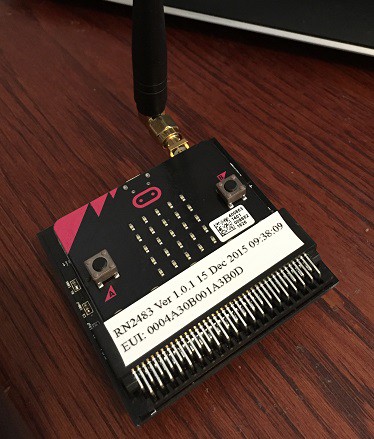Ouch, I really didn't think it was so long since my last project log entry. I have been Just IoTing, Just not sharing with people what is happening. So to say sorry, and catch up:
First, the world has changed a bit. The BBC Micro:Bit is now available from UK distributors. bbc-microbit . Updates to MicroPython include a radio function, which is not Bluetooth, but uses the 2.4GHz radio in the NRF51822 for networking MicroPython Docs.. This might offer opportunities to network over a small area with 2.4GHz, then connect over LoRaWAN for longer distance. It does suggest however, that we will not be getting Bluetooth under MicroPython. I have not investigated opportunities to use C++, or Touch Develop.
My LoRaWAN network connection is to the Things Network, and that has had an update too Things Network Backend. A new staging back-end has been implemented with a more logical and open structure. Device nodes now use Over the Air Activation (OTAA) to get device addresses, so the network join process has changed. Also the Things network now provides no message storage, so applications need to collect messages from the Things Network using MQTT subscription or node.js, as they occur.
We held a LoRaWAN workshop at rLab(Reading Hackspace) on July 2nd 2015. This was really valuable to help us understand the changes in the Things Network, and better prepare end to end IoT solutions from device through to application. We updated the Multitech LoRaWAN Gateways, and sucessfully installed an additional LinkLabs Gateway based on the Raspberry Pi.
So to progress on the Micro:Bit LoRaWAN device node. Following the work to measure power consumption, I built a prototype PCB which contained not only the RN2483, but also an electronic power switch, and a Real Time Clock(RTC) Timer IC. This allowed the whole board except the RTC to be turned off between transmissions. Sleeping power consumption has dropped from 4mA to 1.1uA, meaning devices transmitting infrequently can have now have battery life of over a year. I made some mistakes and poor design choices on the prototype, so made a second run of the PCB with some fixes and improvements.
The pictures above are of the first prototype, I will do separate log for the new board


Discussions
Become a Hackaday.io Member
Create an account to leave a comment. Already have an account? Log In.